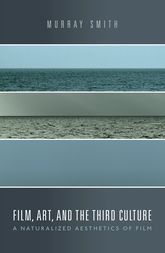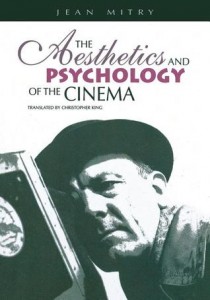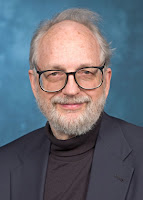In preparation for the June symposium Aesthetics Today*, we will be discussing Prof. Murray Smith’s new manuscript Film, Art, and the Third Culture: A Naturalized Aesthetics of Film (OUP, 2017).
We will be meeting in Jarman Studio 7 Thu. 18 May 4-6pm. Newcomers welcome!
The discussion is open to anyone interested in the intersection between science and art. Philosophers, psychologists, aestheticians, film and media scholars, art historians and theorists are particularly welcome. Open to all Staff and Postgraduate Students.
Please read the Introduction and Chapter One: Aesthetics Naturalized.
Access the ebook for free at Oxford Scholarship Online by signing in with your University login.
In the mid-1950s C.P. Snow began his campaign against the ‘two cultures’ – the debilitating divide, as he saw it, between traditional ‘literary intellectual’ culture, and the culture of the sciences, urging in its place a ‘third culture’ which would draw upon and integrate the resources of disciplines spanning the natural and social sciences, the arts and the humanities. Murray Smith argues that, with the ever-increasing influence of evolutionary theory and neuroscience, and the pervasive presence of digital technologies, Snow’s challenge is more relevant than ever.
Working out how the ‘scientific’ and everyday images of the world ‘hang’ together is no simple matter. In Film, Art, and the Third Culture, Smith explores this question in relation to the art, technology, and science of film in particular, and to the world of the arts and aesthetic activity more generally. In the first part of his book, Smith explores the general strategies and principles necessary to build a ‘third cultural’ or naturalized approach to film and art – one that roots itself in an appreciation of scientific knowledge and method. Smith then goes on to focus on the role of emotion in film and the other arts, as an extended experiment in the ‘third cultural’ integration of ideas on emotion spanning the arts, humanities and sciences. While acknowledging that not all of the questions we ask are scientific in nature, Smith contends that we cannot disregard the insights wrought by taking a naturalized approach to the aesthetics of film and the other arts.
Author’s Bio
 Murray Smith is Professor of Film Studies at the University of Kent, Canterbury, UK, co-director of the Aesthetics Research Centre at Kent, and President of the Society for Cognitive Studies of the Moving Image. He has published widely on film, art and aesthetics. His publications include Engaging Characters: Fiction, Emotion, and the Cinema (Oxford University Press); Trainspotting (BFI); Film Theory and Philosophy (co-edited with Richard Allen) (Oxford University Press); Contemporary Hollywood Cinema (co-edited with Steve Neale) (Routledge); and Thinking through Cinema (co-edited with Tom Wartenberg) (Blackwell).
Murray Smith is Professor of Film Studies at the University of Kent, Canterbury, UK, co-director of the Aesthetics Research Centre at Kent, and President of the Society for Cognitive Studies of the Moving Image. He has published widely on film, art and aesthetics. His publications include Engaging Characters: Fiction, Emotion, and the Cinema (Oxford University Press); Trainspotting (BFI); Film Theory and Philosophy (co-edited with Richard Allen) (Oxford University Press); Contemporary Hollywood Cinema (co-edited with Steve Neale) (Routledge); and Thinking through Cinema (co-edited with Tom Wartenberg) (Blackwell).
*Aesthetics Today will be a one-day symposium aiming to generate discussion concerning the most general principles and questions preoccupying philosophical aesthetics today. The event will mark the 10th anniversary of the Aesthetics Research Centre (ARC) at the University of Kent. Aesthetics Today will take advantage of the publication this spring of two books by members of ARC: Hans Maes’ Conversations on Art and Aesthetics, and Murray Smith’s Film, Art, and the Third Culture: A Naturalized Aesthetics of Film (both published by Oxford). Both books are characterized by their broad scope. Maes’ volume is comprised of extended interviews with ten eminent aestheticians (Carroll, Currie, Danto, Freeland, Guyer, Korsmeyer, Levinson, Robinson, Scruton, Walton), in which Maes probes them on their own arguments as well as their views on aesthetics and the philosophy of art as a discipline, engaging them in discussion of a wide range of specific debates in contemporary aesthetics. Smith’s monograph seeks to defend a naturalistic approach to aesthetics, principally through the exploration of film as a medium of art, but with a sustained comparative dimension incorporating discussion of literature, music, painting, and photography. In elaborating and defending a version of naturalized aesthetics, Smith inevitably addresses fundamental questions concerning the assumptions, methods, and boundaries of aesthetics. Both works connect fundamental principles with concrete cases in a wide range of artforms, and together will form a platform for discussion of the general state of aesthetics today














